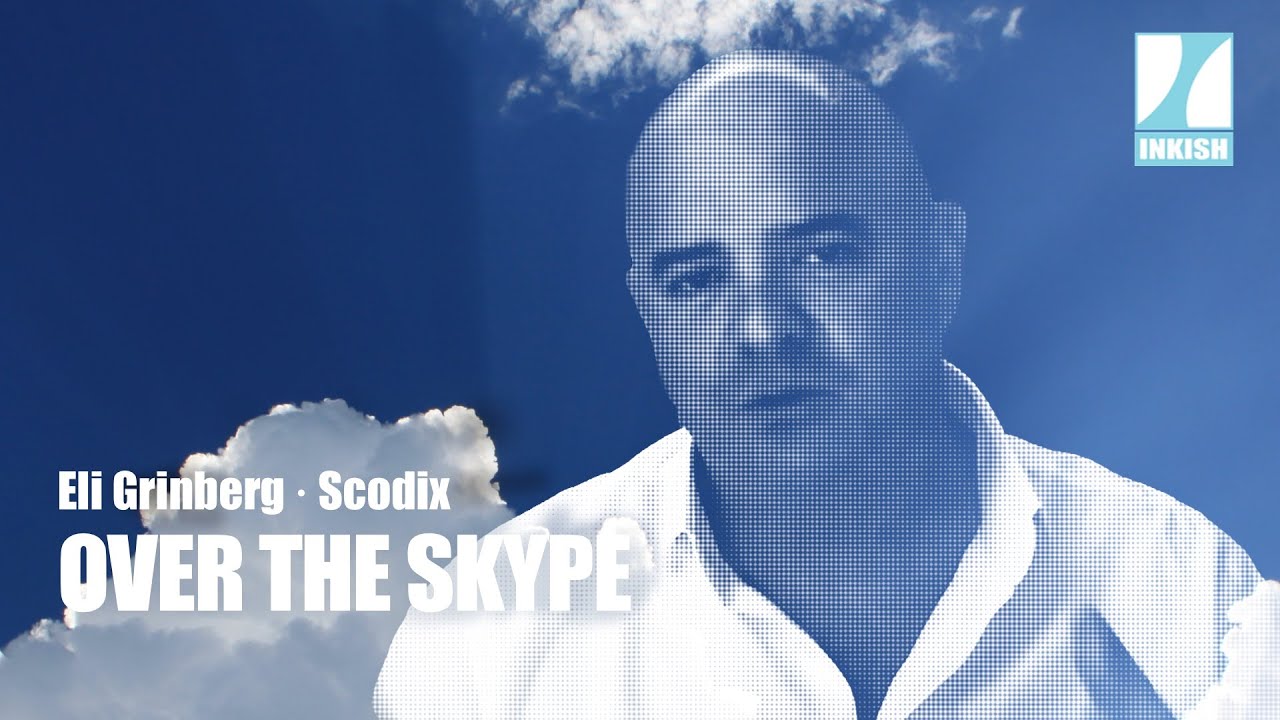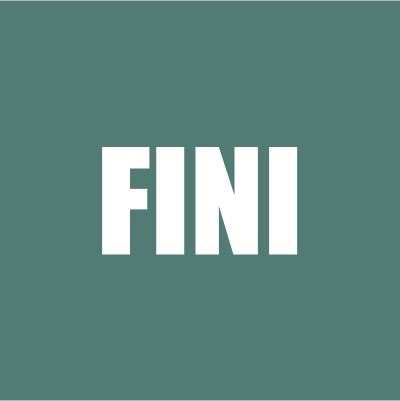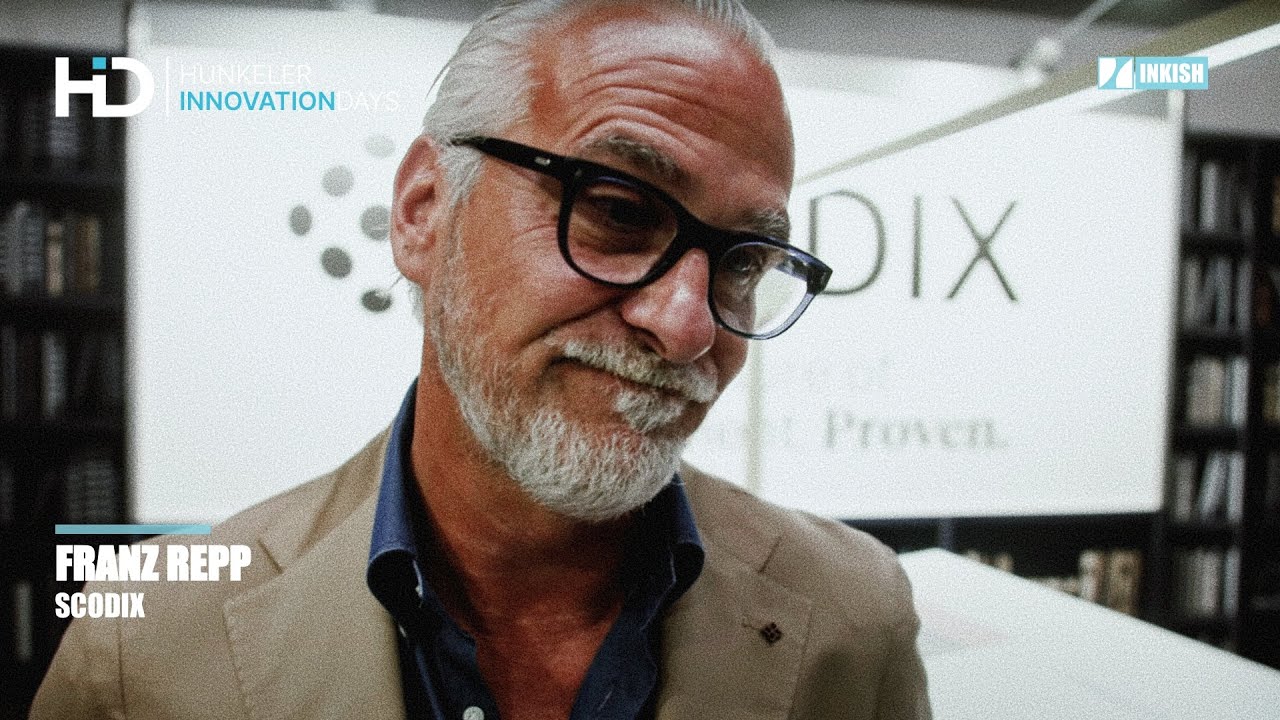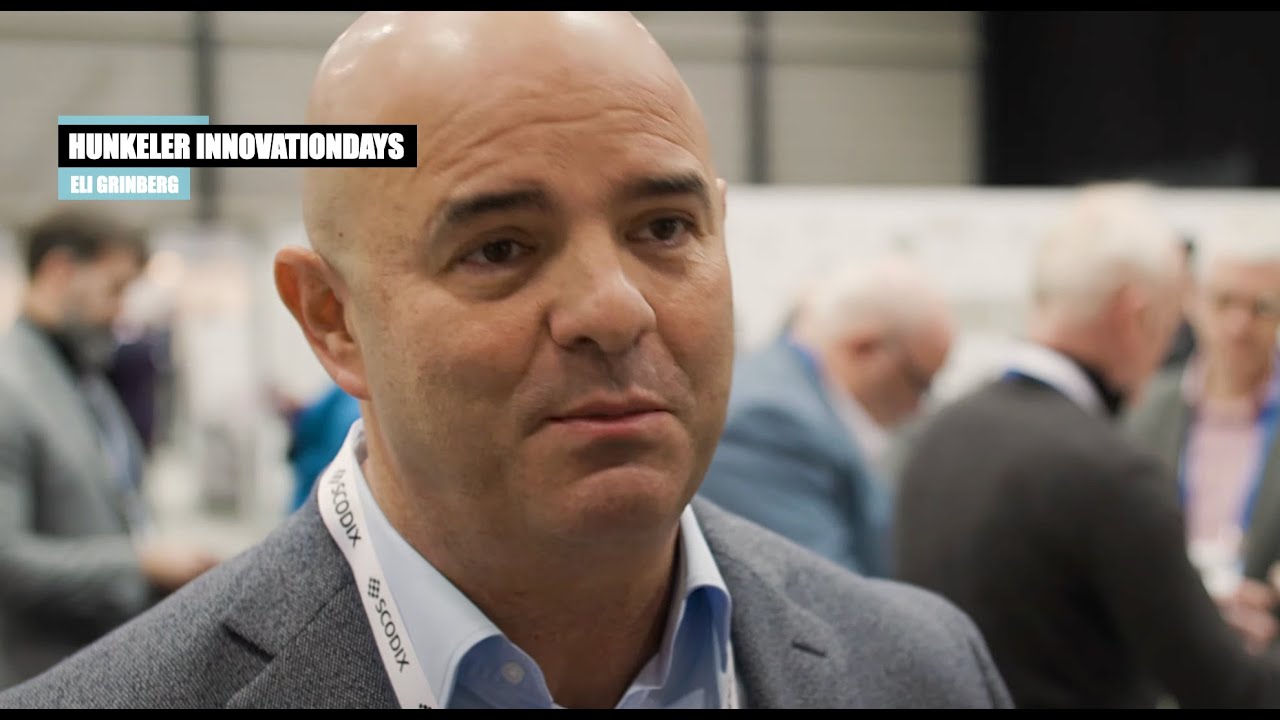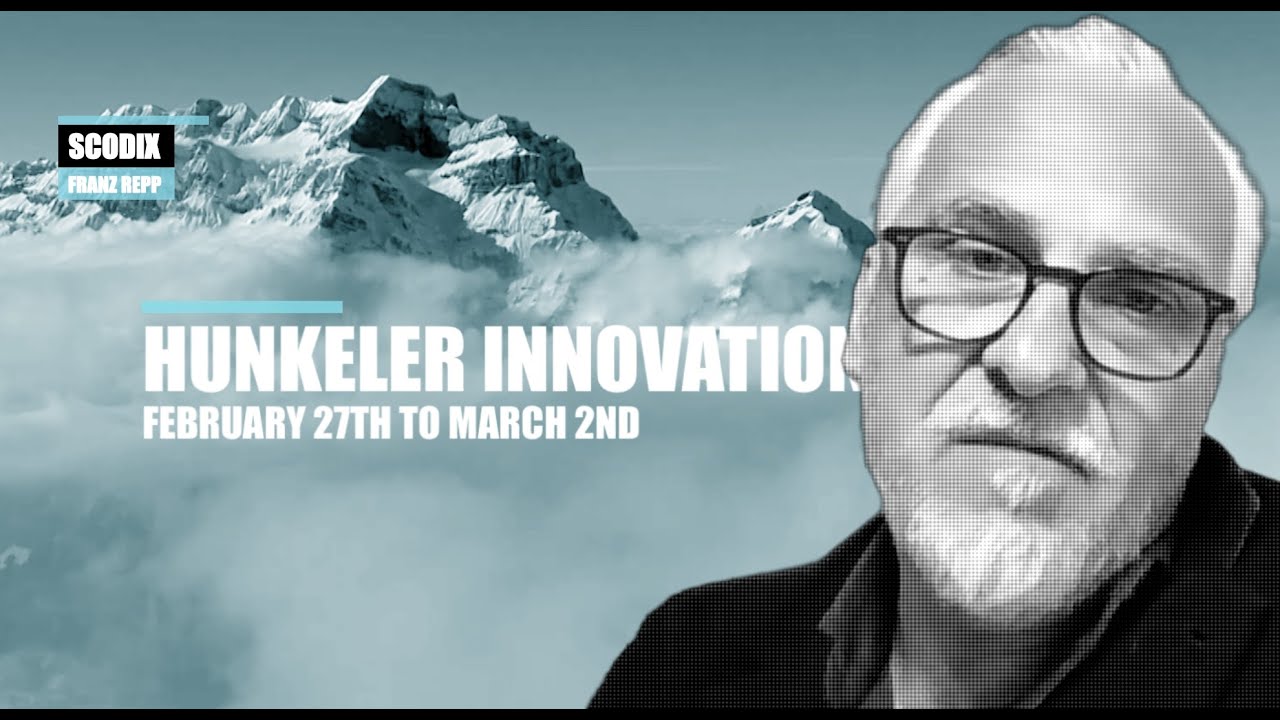Eli Grinberg · Over The Skype · Scodix
In this Over the Skype episode, CEO Eli Grinberg from Scodix talks about how Scodix got started and the ambitions of replacing analog enhancement technologies. Of course, we also got the chance to talk about how Scodix sees the current market situation and why they are launching six new machines.
I have known Eli Grinberg for many years, but this was the first time we finally got time to sit down and talk – GREAT – enjoy!
This is Morten from INKISH TV. And this time I have the pleasure of talking to a gentleman that I actually tried to get hold of for some time. His name is Eli Grinberg and he’s now the CEO of Scodix. He’s also the founder of Scodix. And he is basically based in the Netherlands. So, Eli, welcome to this Over the Skype episode. So how are you today?
Good, Morten. Thank you very much for the call. It’s been a while, but I’m good.
That sounds great. The last time I saw you in person, that was in Switzerland when we met at the Hunkeler Innovation Days. I think there’s been a lot of things going on with Scodix since the Innovation Days in Lucerne. Can you bring us a little bit up to speed? What you have been up to?
Yeah, we obviously were like, in the last 10 years, we were expanding rapidly, installing presses. The good thing that happens when you approach new customers, a new market is that you learn also their needs.
And during this time, unfortunately, all this Covid situation fell upon us and we had to also change the direction that we were going to.
Speaking about Hunkeler Innovation Days : great event for us, one of the most valuable events in terms of return on investment. Hopefully we can meet there again soon.
I mean, one thing is to talk about return on investment. You see, from a media perspective, I just like it because I think that is one of the best shows in planning and its technology… even Hans Gut, he told me. And I need to agree with him. It’s not so much champagne and lightly dressed women, it’s more about technology. And I think that’s what you like too, isn’t it.
Yeah, yeah, I’m coming from a technological background. Worked for many years in the digital printing industry in Israel, starting from the legendary Scitex and then many years in Indigo before founding Scodix. And that’s my… the backbone is completely R&D and technology.
Do you have an engineering background or what is your educational background?
Yeah, I’m an engineer and I worked more than 12 years designing digital presses, starting in Scitex and then Indigo, so.
You know your sheets…! One of the things that I’m a little curious about, because I think that Scodix is obviously not a startup anymore, but when you started and founded Scodix many years ago, you were in a situation where I mean, of course, Israel has a lot of innovation within the digital printing space. And as you said, your background, obviously, you have some good foundation for that.
But I was wondering: one of the things that have been a little bit of a surprise to me, because I have to be honest with you, because I have known Scodix for some years, of course. And we have done a lot of films for you. Thank you very much for your work, but…
A pleasure.
… when I met you in Lucerne, and that is actually a little bit embarrassing, but I will tell you anyway. I knew that you were important in Scodix and I knew that you were out of the militants, but I didn’t know that you were the founder of Scodix!
And I think that one of the reasons why I didn’t know so much about that is maybe because you employ people to take care of management, right?
Yeah, the fact that I’m the founder doesn’t give me the whole skills that are needed to manage the whole company in different stages, OK?
Every stage requires different skills. And the good thing in the Israeli industry, the digital printing, is that you have plenty of good people available, let’s say if you need them, and it’s relatively easier to find R&D and management people and Koby and myself.
Koby’s my co-founder, he is no longer active in the company, but we decided that we should focus on what we are good at. And with a relatively easy process, we succeeded to hire very good people, to run the company next to us and in front of us also.
Maybe your secret is the same as my secret, is basically that it’s more fun to do the fun thing than doing administration and all the boring kind of thing : is that because you just like to be involved in everything that relates to the product as well?
Of course, that’s the fun part of it. Making new products, innovation, coming with new things to the market. Administrative, it has to be there… administration. Otherwise, the business doesn’t run.
Of course.
That’s the fun part. And I still enjoy every design review that I’m participating in, and every opportunity to put my hands on the press brings me a smile again.
Yeah. And let’s talk a little bit about products for a second. We want to talk about the new products as well, of course.
But before we get to that, I don’t know if there is, if you can answer this, but I’m asking anyway, how did you get the idea of getting Scodix started in the first place?
I was working for many years in… I started in Scitex as a student, as an engineering student. And I’ve seen in live the post-press industry being converted to digital. Sorry, the prepress.
Yeah, the pre-press, yeah.
All the CtPs and the scanners, everything that was requiring a lot of expertise and specialized people has become digital in front of my eyes in the beginning of the 90s. And then I moved to Indigo, OK.
So now you move from pre-press to press.
…like the press itself becoming digital. It was an amazing, amazing process. It was still Indigo and then became HP during my time there.
And I was looking for… becoming an entrepreneur and doing things by myself.
And it was more or less a natural step to see the pre-press becoming digital. The press itself more and more. It’s not there, I would say that the prepress is today 100 percent digital.
The press itself depends how you count it, but still, I would say, 10 percent.
There is a consent about this number.
But the post-press is still… I’ve seen in Indigo, beautiful prints, digitally printed, going to hot foil stamping, waiting for three or four days for the molds and dyes. And people who are specialized in tuning the hot foil presses and said, OK!
There’s an opportunity.
That’s it. That’s the next thing. And when we spoke with the potential customers in the beginning, their eyes were shining, you know: bring it to me.
And one thing is identifying the need and talking to potential customers. How was it to get started? Was it… I mean, it requires funding. It requires the right skills, the right people and so, to execute the idea and start to make a company out of this; was it as easy as you hoped or how was that…?
Far, far, far from what I hoped for. But it’s a nice journey. It’s, as we say: running in a roller coaster in the dark!
Luckily, in Israel there’s a perfect ecosystem of funding from the government, from leading venture capitals and investors that are coming from this industry. With their money in this industry, they have a lot of knowledge. And we were very lucky to find the right people to back us.
We started as a startup, as you mentioned, and our main investors are the really leading people.
…
And on the other hand, the leading venture capitals from the US: Sequoia, Lightspeed, then ICV, more, and so on. So we were very lucky, I think also in the perfect timing.
Yeah.
to find the right people to help us, and the right money to support us to grow.
When I saw a Scodix Machine the first time, which was actually in Print Pack India, I can’t remember the year, but I think it was; it must have been relatively soon. Maybe the first or second generation, I don’t know. I was blown away when I saw it.
I saw this basketball.
We remember that your marketing used that drip effects to make sure that it looked like the drop off the ball.
I was blown away because one thing is, if you maybe could transform some of the things that you could do analog.
But what I really liked was also your opportunity to do things that are not possible in analog. Was that also kind of your vision from the beginning to do things that was extending the enhancement of printed products?
It came along the way, ok. The first intention was to replace. This is still our main mission, is to replace the analog heavy duty, time consuming, with a lot of waste processes like this Silk Screen or Hot Foil stamping. Luckily, our customers are more creative than we are, and they really did amazing things in all 99% of the samples that we are using and showing, it’s something that we learned from our customers.
So you get a lot of inspiration from demands from customers. As you know, we visited one of your customers less than a month ago, Traffic in Germany.
And I think that Patrick Donner, he said to me that we don’t want to do the usual thing, we tried to do things that even the vendors are not recommending, like different substrates and I can imagine that when you need new ideas for R&D, you can just call him, right?
Calling him, calling other customers. They use the machine much more than we do they are… They need to make money out of it, in the end, you do. Yes, that’s the main value of this product is profit generation. And once you need to make money, especially in those unprecedented times, you know, it’s… you become creative.
Yeah… And I can’t help think about, because when I refer back to when I saw the Scodix machine for the first time and when I compare it to now.
Obviously, you were, I think you were kind of a first mover in that digital enhancement space.
And you have got a little competition from different places in the meanwhile. And one of the things I can’t help thinking about is that when I look at the Scodix machines, both the output of it, but also the build quality and everything in it, it seems that you have precision.
It has kind of been the Rolls Royce of digital enhancement. Was that also intentionally from the beginning that you wanted to be a premium product? Both in built quality and also in output.
Definitely, yes, from the beginning. That was our vision because as a small company, we are good at making, let’s say, shorter runs, shorter volumes, smaller volumes of presses, but in higher quality. We cannot compete with mass production of printers in Asia. Okay. But we can position yourself in the high-end of this industry. And that’s what we do, by the way, and that’s why we are luckily, after 10 years of selling those presses.
And we decided that we have no compromises in the build of the machine and the selection of the components and any aspect starting from the service that we give to our customers and ending in the end product that is printed there, is the face of our company and we’re in…
The funny thing is that I see now quotations coming out from our customers to their customers. They’re quoting it as Scodix.
Oh really? That’s nice, right? It’s like a Xerox in the old days or like a Hamon where you’re not referring to Orkan or a photocopy…
The main problem is that the customer is quoting the competition under Scodix. But that’s another story!
Okay. Yeah, that’s what you have to live with.
So, Eli, one of the things I am also a little bit curious about is that when you are kind of a first mover in a totally new segment in the market like… Am I right? Were you the first ones to do this or…?
Yeah.
OK. So when you were like first movers in this one, I think that first movers often have to take the beating for, you know… it takes time to get to market.
It takes time to get the recognition and takes time for, you know, the old printers that smell the smell the print, that touch it they’re “is it good enough”, you know that?
But you have gone, you have passed that now. I think that Scodix is well recognized in the global printing industry.
And I was just curious, when you look at your marketing, especially when you go to the Trade Shows, you always have stunning print samples as part of your promotion.
Is that also something that you believe has given you a better precision, faster than if you were just focusing on the DPIs and the machine and the speed, and you know the way that normal printing equipment is sold?
I think that you need to combine them both. I mean, big shows, especially like Drupa, used to be, let’s say, OK. Hopefully we’ll be again.
You need to attract people to your booth. You need people to go in the show with your samples, with the bags branded, with Scodix and photos of themselves.
So you extend your marketing percentage sales by having your Scodix bags, right?
Of course, of course, that’s one thing. But on the other hand, you need to be unique in what you sell your product. And for that you have to be on the top of the performance in this industry. That’s our main focus. Okay. Marketing is good. It’s nice.
But it’s a tool to sell more equipment that gives value to our customers.
And that’s the bottom line.
For me, the best thing that we had in the show and in many other shows is customers coming to our booth, giving a positive testimonial without us even asking them to do it. And that was a big surprise for me. And that I think shows the main value of what we do because we are still a small company and we are still in the same family with our customer.
Yeah.
It’s a very intimate relationship, and that’s our right of existence, having happy customers.
And a company like Scodix, will it always be a kind of a niche company or do you think you have a potential of being a really big company as well?
Our intention is clear. It will become a very big company in terms of our industry, OK?
We have no plans to go to other direction in the print industry. We have no plans to print colors, OK? There’s enough players there. But in our industry, I think it’s big enough for us to grow 10 or 100 times fold, and there’s still potential for it.
We’re still, in the beginning of the way, from my point of view.
We started, as you mentioned, this product that you’ve seen in India. It’s a typical first generation. What we are selling now is a typical second and third generation someways. You cannot compare the iPhone 12 to the iPhone 3.
That would be unfair, right!
No but I mean, we learn a lot. And we deploy it immediately in our products.
Yeah. So, OK, so you had the… you believe that you have the potential of becoming a big company. What does it take? Because I mean, I think that everything works in your favor because everybody is talking about mass customization. Everybody is talking about shorter print runs. Everybody is talking about faster turnaround times. I think the timing is not too bad, is it?
Specifically talking about these months and Covid, is a hard time and tough times to all of us, but luckily we have good investors and board members behind us to back us to pass this period and this season.
And yeah, we are on the way to grow. We launched now in September. A few weeks ago, a full new product portfolio, which is definitely not something obvious to do in those days. But we believe that we design specifically the presses for specific markets.
So that’s, at least my philosophy in growing, is to have specific segmented products for specific markets and not to have one trick pony that does it all.
So commercial and specialty prints have their own presses and web to print web to pack have their own family of presses customized for their needs.
And obviously packaging, which is our… no doubt that’s our future. And our growth engine now has a full portfolio of products.
Our biggest part in the portfolio is focused on packaging. We have a web to pack press. We have a BE2 press and also 2 B1 presses. One is the E106 and now also a new ultra B1.
So when I spoke to your colleague Robert here a couple of days ago, we also spoke about talking to you today. And he, of course, mentioned that you have: I think.. is it two weeks ago, you launched the new machines to the market, right?
And I was just wondering : one thing is that you say that it’s uncommon during the Covid-19 to make such a great lineup of products.
But is that what you were expecting to deliver at the Drupa 2020 show? Or is it something that has been under development for a longer time and then it’s just the right time now? Or why are you doing it now? Let’s also talk about what the machines are, right?
The plan, it’s part of everything. We were planning to launch an expanded product line in Drupa 2020 and then it was postponed. And I don’t know how it will look like, we still plan to be there, we didn’t withdraw our attendance from the show. But since we don’t know if it will happen and how it will look like we decided to release it now.
I mean, there’s no better time than now.
Yeah, because the market is a good time now, that’s now typically printers invest in equipment, right?
Yep. Yep. And also, yeah, we had it ready for Drupa, more or less. We didn’t want to wait more than that. So we decided to release it now
Sounds like a good plan. So, Eli, what is it you have launched?
I know you want to talk about it, now you can do it!
So it’s a whole series of products based on the well known platform of the Ultra that we had, but now split into six products, starting from an entry level, ultra, very basic, smaller footprint, the 1000.
And then the gap in the B1 Ultra fully loaded for the packaging. OK. With the full range of options and segmented by the markets. So we have a family of products for commercial printing. OK. This is still our main market up until now. Commercial and specialty.
Our sweet, sweet spot is the web to print. Our biggest customers are coming from this industry. All the big web to print players in the world have multiple Scodix systems. OK.
I cannot mention numbers and names so much, but. That’s our sweet spot. That’s the highest utilization that we see to our presses and we designed them to work 24/7. They are working 24/7, multiple sites, multiple presses.
And we have a full product portfolio, now for the Web to print and also for the Web to pack, which is a growing niche inside this market.
And as I said before, the packaging we see, definitely, is our future. And we are focusing there, we started with the E106, a very, very high end and high cost product. And now we added 2 more products, the Ultra 5000. And Ultra 6000 B2 and B1.
So this sounds like broadening your offerings. Seems to me that that is part of also how you can create a bigger number of printers buying your equipment because you can address different segments, but also different price tags. So has there been any actions to your launch yet or is that too early to talk about?
We launched it two weeks ago. We received very good feedback from our dealers and sales guys. Recently, a week ago, we closed a very nice deal in Germany : a 2 press deal B1 and B2. I will not [share] names yet. Thank you. But it’s…
OK.
But if I had to mention 8000 printing companies before you say yes, that takes a long time so you can just tell me Eli, that’s much better now. No… I’m just kidding!
So two weeks ago you launched and already now you see interest in the market for these machines. Is that because of the offer? I mean, is it because you have these six different models that approach different markets, that you have got these instant reactions? Or is it more because the market is maturing and understanding the value of …
It’s both and we widened the spread of our product, the specs and also the pricing. So we have more entry level prices, which helps those who are hesitating if they want to jump inside this digital boat or not.
And on the other hand, we put an ultra B1 product in between the E106 and the Ultra 2000 family, which helps the packaging companies to start doing digital enhancement without too big investments.
And I must say that also some of the print stamps I’ve seen that you have done on packaging is simply stunning because I think that, again, as I said before, one thing is, of course, how it looks.
But as you mentioned, it’s also the economy.
I have read some reports, maybe not this month, but maybe last month where there were some reports quoting that in times of the COVID 19, how packaging looks has become an even more important thing.
Even when you sell online that you have packaging that you can… you have it the tactile of the packaging. But you also have the foils and the varnishes and the way it looks. Is that something where you… it’s kind of a leading question, but is that something where you obviously have investigated into this market.
Do you think that packaging converters are interested in also bringing these services in a digital format to their customers? Or is it a new approach to the market in your opinion?
I think with convertors, when they sell the product to their end customers, digital or analog, it doesn’t really matter. They want to replace first an existing process, and that’s what we are focusing on.
So just to you…
A better price and more flexibility because short runs are getting smaller. Inventory is getting more expensive and they want to offer the same with less costs. That’s our main spot.
Okay, so just to understand you’re a 100% correct. So basically the first objective for Scodix is to not be an add-on to the convertors, but to replace analog equipment.
We want to be mainstream in the packaging industry. Just the adding value of digitalization is nice to have. We want to be in the longer runs. That’s where we aim.
And if you look at the KPIs for a converter for example, is that the price per unit or is it not the Scodix machine but is it operational cost or is it the speed or what?
What is the main thing, in your opinion, for this kind of thing?
There are some things that have to be, let’s say, for a given. OK. The quality has to be the same. Otherwise, there’s no discussion. And I think that we can match and even exceed the quality of the existing processes to date.
So that’s the first barrier. Once you’re not there, there’s no discussion.
But once you pass this gate: the economy talks OK, and its combination of all : the cost per page, the utilization of the press, consumables, service, everything.
From our experience and its varies per market and country and pricing… Almost every job below ten thousand sheets. We can compete and beat analog. And the setup cost, especially in hot foil stamping, which is unequivalent to anything else : it takes three, four, five hours just to set up a hot foil press. Usually you finish the job on the Scodix by the time.
Yeah. So that means that because of the long setup times and the other half, the speed is maybe less important, especially on up to ten thousand sheets spacing. That’s what you’re saying.
Well, and then the Molden dyes, which are also very expensive and you do it once per job. Very mechanical process. It takes usually three, four days before you get even the first prototype to see it. And here on the Scodix. You just throw the PDF file and you get it out and you can proof the job and start running it. It’s not only the setup. It’s also the preparation.
So. I have visited some of your customers. I have seen your output.
I can word that everything looks perfect. And I also can word that customers are very happy with investments. Then I have a little question for you. And that’s… it’s not trying to be critical or anything.
I’m just a little bit curious because if the quality is in place, if the economy is in place, what is then the obstacle to get the machines into the market?
Is it conservatism or is it the entry point investment wise, or is it just because people might not know enough about your offerings yet, or what do you think is the biggest obstacle?
In your question, you named the main obstacles, but it’s conservatism. And usually you see it in our customer side, that the second generation is the one who is deciding to buy the digital equipment.
I have seen that, too, yeah!
We see it all over. The second generation in a company, if it’s a family based company is the one who is jumping into the water and going digital.
In many cases, the first digital equipment on the floor or the production floor is the Scodix. Yeah. The only PC on the floor is a Scodix PC, OK.
The rest is analog. That’s the main thing.
Second, we are still a small company and our footprint in the market, although we have more than 400 installations worldwide, but it’s still nothing compared to the potential that we have. And we see an effect of you know, companies starting and then the next competition across the street is buying and so on, so forth.
So it takes time. I think that the web to print customers are doing great service for us when they are selling a customized personalized hot foil stamped product either business cards or greeting cards or whatever. It’s a very cultural issue. Every country has its own habits of buying printed products, as you know.
Yeah.
But as I said, we’re still in the beginning of the way and we’re growing rapidly.
So we have been talking for half an hour now. So let me then maybe from my perspective, a good ending point. Would you say that the biggest obstacle is not the product, it’s not the price and not the conservative part, but your time to visit enough customers? Right.
Especially in those days. Yes.
So Eli, I know that you had some takeaways if you want to talk about, if I have forgotten anything. I have not read anything just for the audience to know. But I also want to give you this opportunity, if there is something that we need to talk about, that you like to discuss?
I think we covered most of it.
Wow. And I didn’t even practice, right?
Yeah that’s good! I’m just inviting everyone to visit our website. To see, the new product portfolio that was launched two weeks ago. Very exciting. Much wider portfolio. Much better offering. We’re here for you.
But you know you are on INKISH TV. That’s a little bit unfair. You should say that you should go to INKISH TV and see all the beautiful films we’ve done for you. Right? I think that’s more fair.
I think that’s more important for our website. And thank you for that.
Eli Grinberg, a CEO and founder of Scodix. A really interesting conversation, I’m really happy about it. So I just want to say thank you very much for your time. And I wish you all the best, both as a company and personal health. I know that we are all struggling from that terrible time we are in right now, but you look nice and healthy.
So all the best. And thank you.
Thank you Morten!
































































